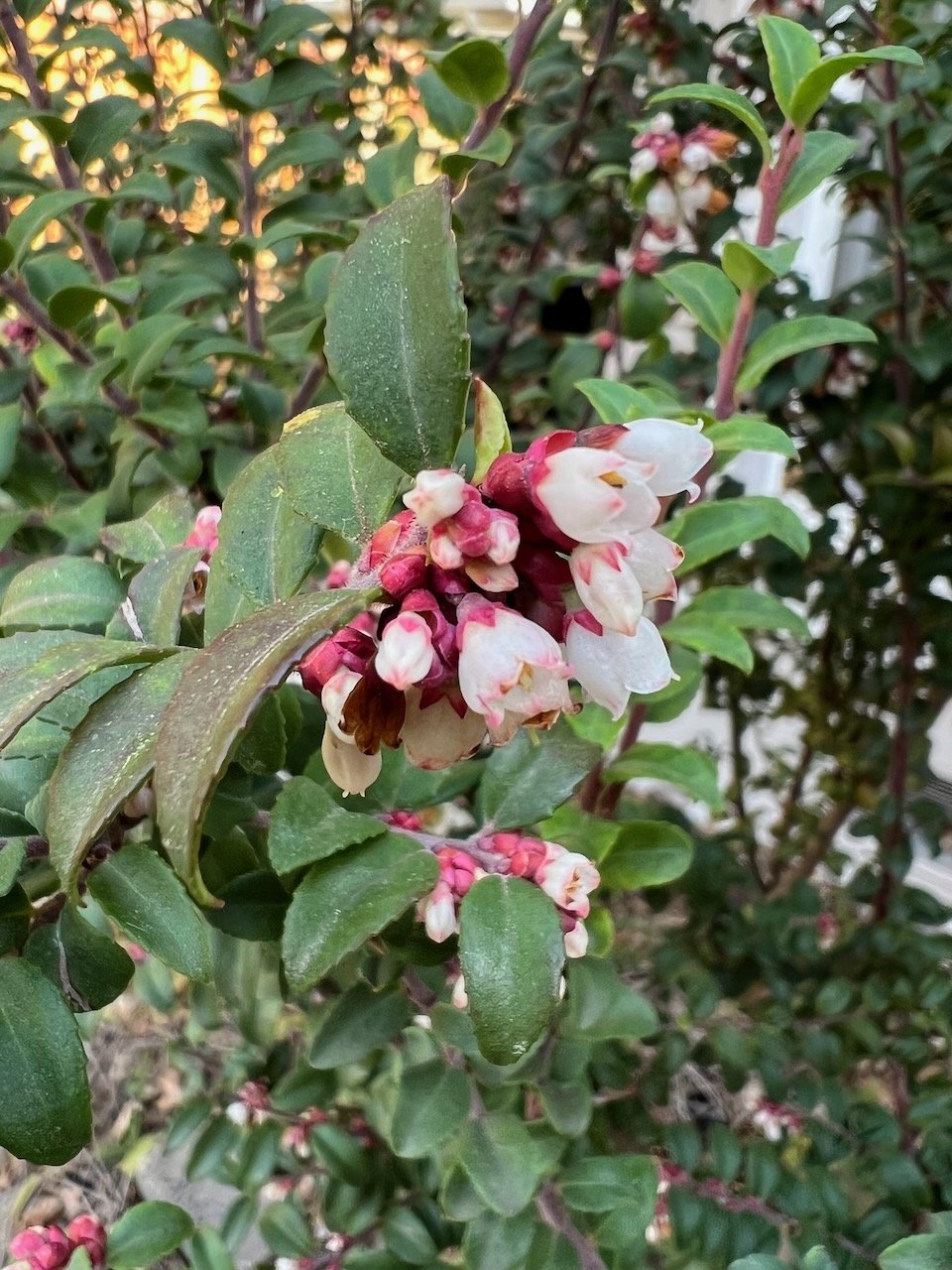As you know, I’m teaching an Urban Agroecology course this Spring at Merritt College. Part of this course is a lecture, where we are learning the theory and ideas behind different kinds of agriculture/methods of growing. Part of it is hands-on, learning these concepts physically in laboratory. For this portion of the course, I decided the students and I would rebuild an abandoned garden on the property of the Environmental Center at the far end of campus. This whole area was neglected for years, but slowly and surely my little team is making an enormous difference in the space. Today was a banner day, as we finally got three cubic yards of soil delivered, and were able to fill all our raised beds and transplant all the seedlings we started back at the beginning of the term.
As we were happily planting (why is planting so much fun? why does it make our hearts so glad? There is a mystical side to gardening which is hard to quantify), some of my students were asking questions about how certain veg grows, particularly heading vegetables. (Some of my students have a lot of gardening experience, and others have none. This diversity of knowledge is one of the strengths of our group.) In the course of our discussion, I promised to take some pictures of my little farm to share; then I realized that I haven’t shared this kind of thing here on the blog in ages, and maybe my readers would also be interested.
Top row, left to right: Fennel growing through the fence, cabbages which we have been shredding and sautéing like greens, cilantro growing everywhere, and rainbow Swiss chard.
Middle row, left to right: The last of the broccoli going to seed, shelling peas, Russian Frills kale, and one of the garlic beds (with cilantro).
Bottom row, left to right: Oregano starting to regrow, rosemary blooming, the artichoke plants getting big, and the carrots nearly ready to harvest.
In the North Garden, where I plant tomatoes every year (it being the sunniest space I have during the hotter months), I decided to have a cover crop over the winter, to improve soil tilth, water-holding capacity, available nutrients, and soil biology. I seeded (in October) a mix of rye and crimson clover. These are going gangbusters, and many other interesting plants have also germinated here - the ubiquitous cilantro, but also blue flax (Linum lewisii), common speedwell (Veronica persica), and borage. Every so often I tear some of this out to give to the chickens, and in a month or so I will chop it all down, taking care not to disturb the roots (letting those rot in place), and use it as mulch for the tomatoes. If it regrows, so much the better, as it will provide a living mulch. I doubt it will last long, though, once the weather gets hot. Tomatoes go in the ground the first weekend of May, so I’ve got time to let it grow yet.
The flowers that are blooming are mostly native, things like ceanothus, ribes, and manzanita. The verbena ‘de la mina’ is getting ready to bloom, too. Bulbs are popping up all over the place, and my pansy ‘wall’ has looked great all winter.
The fruits are starting to wake up. Quince blooms earlier than the other fruit trees, and provides a beautiful and leafy cover for the chickens in their run. Huckleberries and blueberries have put out their bell-shaped blossoms, and remind us that berry season isn’t far away. And this photo of the lemon tree is reminding me to put up juice before the fruit rots on the tree!
I started my pepper seeds late though this light rack has been in use for a while now - first it was warming a batch of peppers for the school garden. Now it’s finally got ours, and as soon as they germinate and get potted up and out in the greenhouse, it’ll be time for tomatoes!
The chickens are doing great, all are laying well, and are providing us at least one dinner a week. Below you can see the makings of tonight’s meal - an egg salad on homemade pita bread.
I’d love to know how your gardens are doing. It finally feels, here in California at least, like spring is well on the way!




























